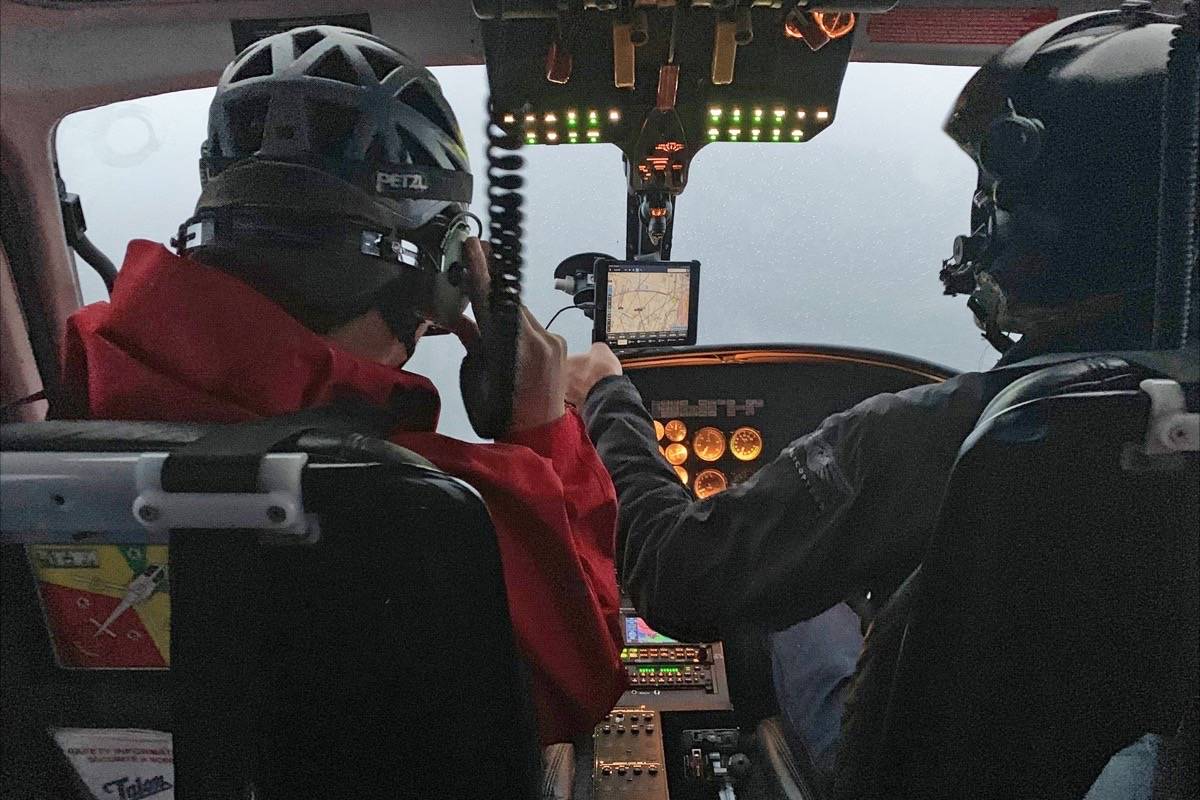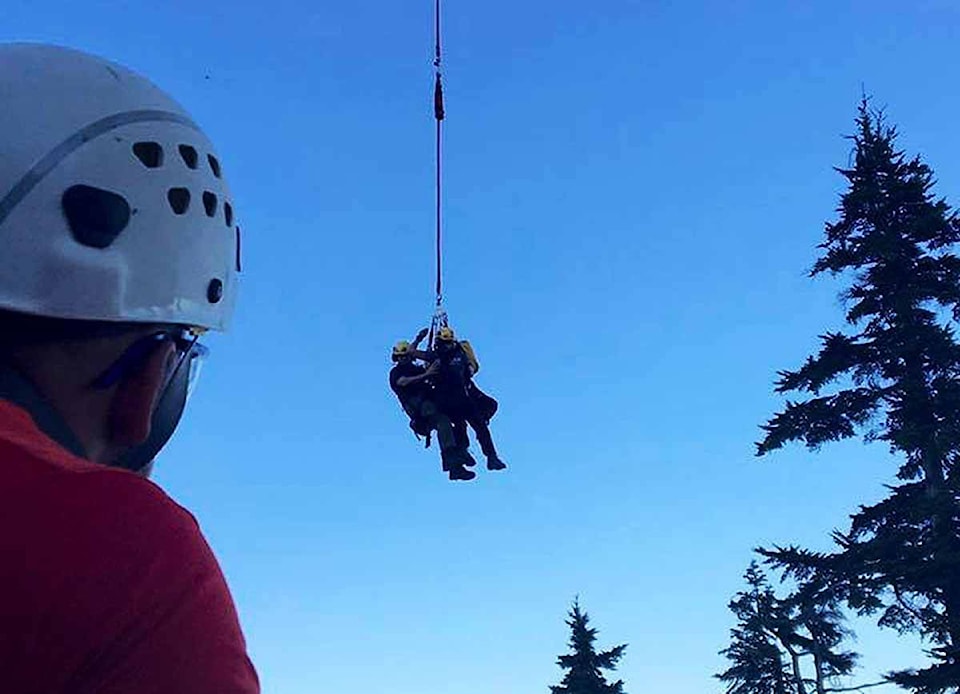The group of volunteers who give their time scaling shear cliffs, wading through stifling bogs or just grinding it up tortuous trails to save lives in miserable weather, celebrates half a century, Saturday.
Ridge Meadows Search and Rescue is marking its 50th with an open house at search and rescue headquarters on Jim Robson Way, beside Planet Ice. The event goes from 10 a.m. to 3 p.m. and everyone’s invited. “Ask questions and see what it is that we do,” said search manager Rick Laing.
Displays of search equipment, vehicles, kids’ activities and a food truck all will be there.
Laing has been with the group for 34 years and has noticed a few changes during that time, all connected with the relentless pace of technological change.
Before cellphones and satellite phones, calls used to come in about hikers who hadn’t returned by their expected times or were late getting back.
| Ridge Meadows Search and Rescue celebrates 50 years.(Contributed) |
Now, with better communications, hikers can keep friends and family up to date about where they are. “So we don’t see those types of searches any more,” Laing said.
Now, search and rescue responds to calls where people are hurt or truly lost or unable to get out.
For example, last weekend, two teams of volunteers spent Saturday night traipsing eight hours through horizontal, soaking rain and wind to reach four people who became stranded on Golden Ears mountain by the storm. They crews got to the hikers at 2 a.m. the next day.
| Search manager Rick Laing joined SAR in 1985. (THE NEWS/files) |
While some parts of Metro Vancouver are seeing increases in the number of calls from tourists or selfie-chasing adventurers, Laing said that Ridge Meadows has only seen a slight increase in the average number of rescues per year, which currently sits at about 30.
Online posts of pretty spots encourages others to try to get to the same destination without proper preparation. “And they tend to get into trouble,” Laing said.
| Ridge Meadows Search and Rescue celebrates 50 years. (Contributed) |
Improvements in clothing, making it lighter, more waterproof, breathable and warm, make a difference as wel.
Light, waterproof clothing and durable, reliable equipment make all the difference.
“Certainly, equipment has improved vastly,” said Laing. “Back when I started, we had a rope, probably half a dozen carabiners, (rope connectors) four radios and a stretcher, and that was about it.”
Now, they have two boats, an ATV, three trucks and a building. That’s typical of most teams now, which have equipment which helps them do the job better.
Currently, Ridge Meadows Search and Rescue which has 32 volunteers, could be facing a future shortage because, like glaciers, the supply of volunteers is drying up. “It seems to be harder to get more committed volunteers,” Laing said.
Twenty years ago, “You’d have people knocking down the door to volunteer. Now, you don’t see them as often.
“There doesn’t seem to be the vast population wanting to volunteer any more. I really don’t know what it is,” Laing said.
In addition, while helicopters did help with searches decades ago, they’re more commonly used to pluck people off cliffs because it’s recognized that it just saves time, energy, people and equipment to get a helicopter in.
Laing said that the search for John and Lesley Evans, who went hiking on Golden Ears Mountain in June 1966 sparked the real creation of search and rescue. The father and son were never seen again and Evans Peak was named after them.
More stable funding is recent years also spares the efforts of constant fundraising. Grants from the cities of Maple Ridge and Pitt Meadows also chip in with more than $10,000, each year.
Laing also says that today there is more concern for the volunteers and points out there is a team created by the B.C. Search and Rescue Association, has created a critical stress management team to help counsel or brief volunteers who’ve been in involved in traumatic events or missions.
Al Leonard, joined in 1990 and now helps with training, driving the rescue boat, and administrating. He agrees that crews are no longer dispatched to find overdue hikers but adds that Maple Ridge is spared many of the calls that can happen when people take a gondola to the top of a mountain and then find themselves in alpine wilderness.
“In most of our area, you have to hike for four hours to get yourself into trouble.”
He remembers his first find of an overdue hiker, who the team found sitting beside the West Canyon Trail, with a small fire going.
He also remembers the tragedy in Pitt Lake in either 1990 or 1991 when four boys drowned, never to be found again.
There are two technological advances Leonard is looking forward to though. Ridge Meadows Search and Rescue has ordered three or four electric-powered mountain bikes. Once trained up, the members will be able to cover ground much faster, while still being attuned to their environment and searching.
He’d also like to see drones used more, although there are many restrictions on their use. “I think they’re under utilitized and they have the potential to be an incredible resource,” Leonard said.
It’s still boots on the ground though that finds people, he added.
pmelnychuk@mapleridgenews.com
Like us on Facebook and follow us on Twitter

